Welcome to Cordova’s Native Plant Garden!

In the summer of 2012, CRWP and Cordova High School Students worked with the City of Cordova to construct a native plant garden adjacent to Odiak Pond. The garden provides valuable educational opportunities for visitors to and residents of Cordova, and will also be used to generate seeds for re-vegetation projects where invasive plants have been removed or the ground has been disturbed.
Learn more about the native species in the garden, why gardening with native plant species are a good idea, and the alien invaders (invasive species) in the sections below.
Fireweed
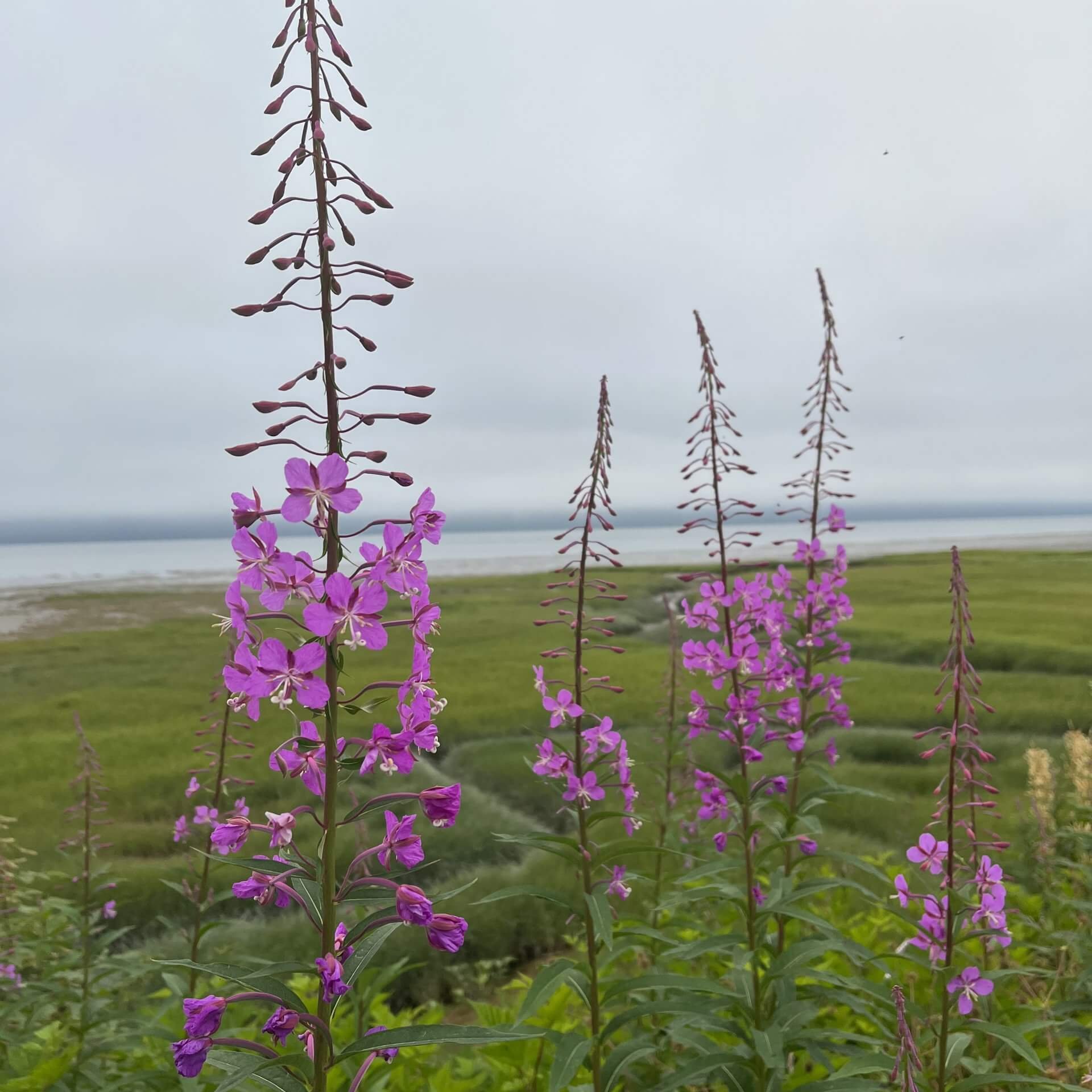
Fireweed (Chamerion angustifolium): Fireweed is known around Alaska for its bright pink four petaled flowers. It grows in meadows, woods, and along roadsides from July to September. The common name fireweed originates from its resilience against wildfires due to its deep network of roots that escape fire. Fireweed will usually be the first plant to grow back in an area following a wildfire and will promote other growth by distributing nutrients through the soil. Indigenous peoples in Prince William Sound would use fireweed to treat boils, cuts and scrapes. They would cut an “x” onto the top of the boil, then crushed fireweed roots would be placed on the wound and wrapped in a bandage. This was left on for a few days until the center of the boil would come out.
Sugt’stun: qanganaruaat
Eyak: GALAtsitl’Xa’ yaan’Lt’ahL
Wild Celery

Wild Celery (Angelica lucida): Wild celery, also known as cow parsnip or poochki, can be found in meadows, coastal areas, and riverbanks. The stem and leaf stalks of this plant are edible and provide an important food source for bears and their cubs in the spring. By peeling off the outer skin and placing it in seal oil for about a week, Indigenous peoples in PWS would create an oil mixture that could be rubbed into hair to prevent dandruff. Although wild celery can be used in natural remedies and has anti-inflammatory properties, it can also be very dangerous. The sap produced by this perennial herb contains photo toxins which cause irritation to the skin. If exposed to UV light after contact with skin, the toxins can cause a sunburn-like blister.
Sugt’stun: cingkat
Eyak: yeet’
Wild Iris
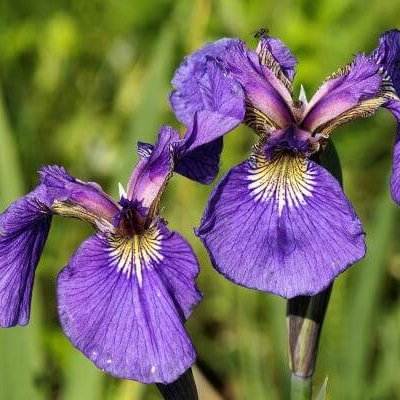
Wild Iris (Iris setosa): Wild Iris can be found in bogs, meadows, and the shores of lakes and streams around Cordova. The three large purple “petals” are actually sepals that help attract pollinators. The true petals of the wild iris are much smaller and located toward the center of the flower. Both the seeds and the roots of this plant are poisonous.
Horsetail
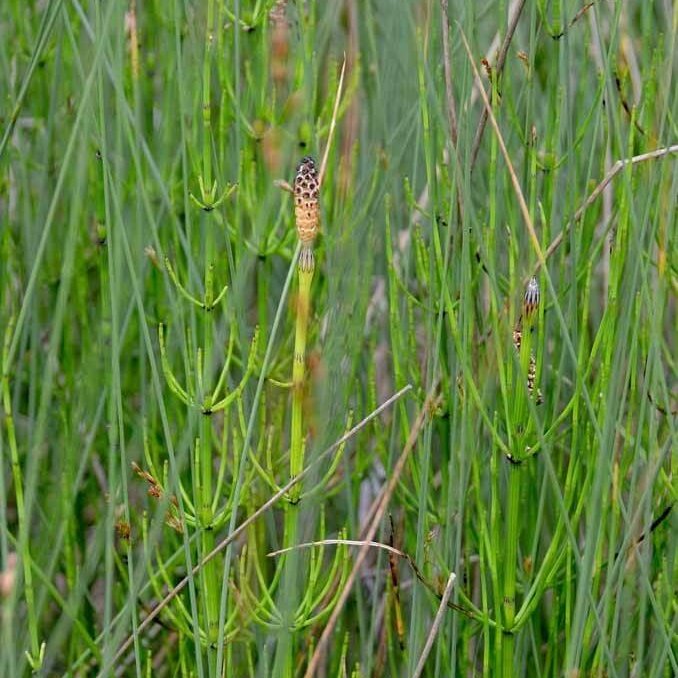
Horsetail (Equisetum arvense): Horsetails are distributed throughout temperate and arctic areas of the northern hemisphere, usually growing in moist soils. It spreads from rhizomes which can grow as deep as 6 feet which makes it difficult to eradicate from sites it is unwanted in. Horsetails reproduce via spores which are borne on the plant’s reproductive stems. In PWS, this plant was used by native peoples to treat pimples. They would mash the horsetail into a paste and place it on the pimple. An eagle feather was then placed on the paste and when it was removed a few days later, the paste and pimple would cling to it.
Sugt’stun: Paumnaruqq
Western Columbine
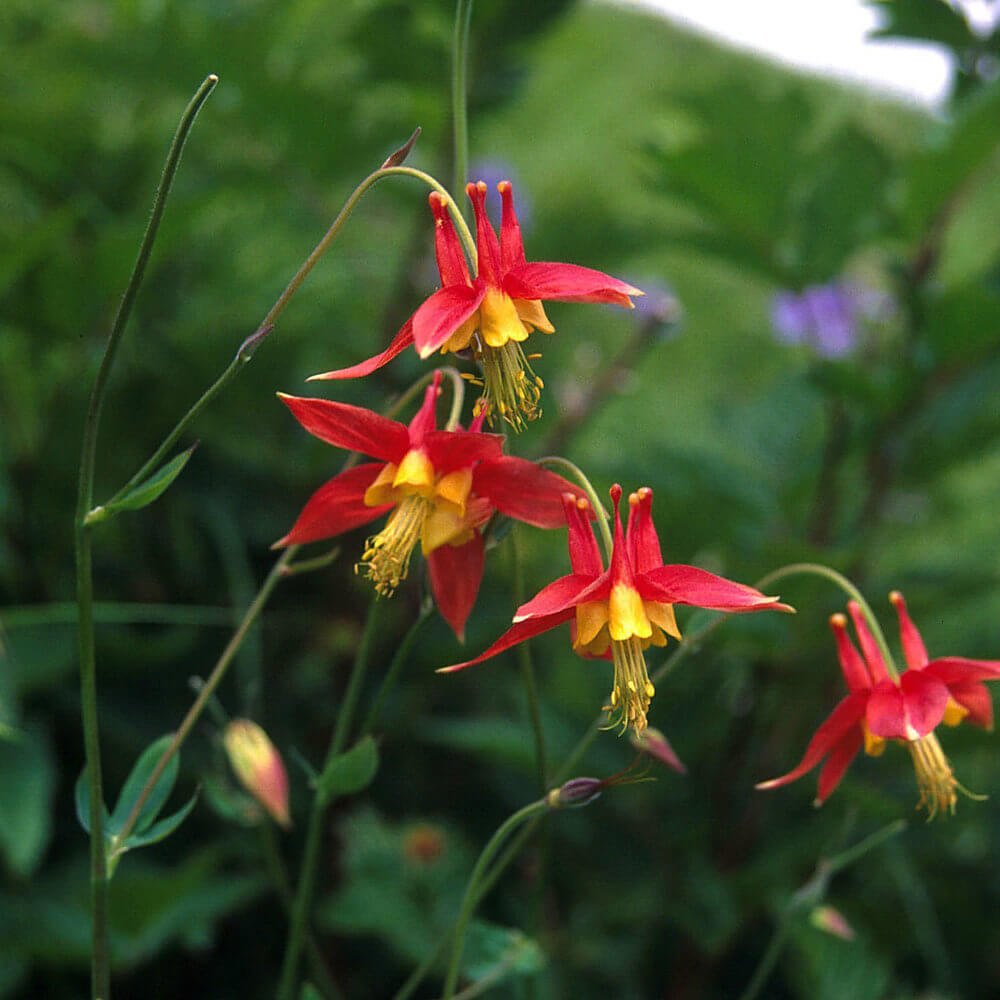
Western Columbine (Aquilegia formosa): Western columbine grows in moist areas in woodlands, forests, alpine and subalpine meadows. Its long flowers are pollinated by long-tongued pollinators like hummingbirds and butterflies. The common name, ‘columbine’ comes from the Latin for “dove”, because of the resemblance of the inverted flowers posing as five doves clustered together.
Eyak: k’uqa’xut’L
Yarrow
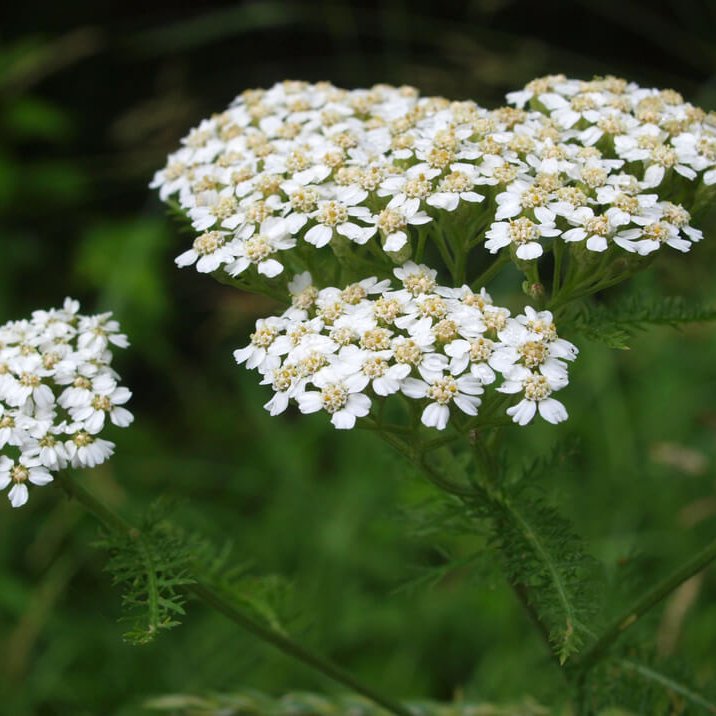
Yarrow (Aquilegia formosa): Although yarrow can be found in a variety of environments, it is most often seen in meadows, woodlands, and along roadsides. Common yarrow has been used medicinally all over the world since ancient times. Its uses vary from treating a common cold and sore throat to being used as a sleep aid or insect repellent. Yarrow has many traditional uses from all over the world. Here in Prince William Sound, one of the ways Indigenous peoples would use this plant was for arthritis. They would store dried leaves in a cloth bag which could then be warmed in hot water and placed on the body for arthritis. Another way yarrow was used was as a brewed leaf tea given to new mothers to force the uterus to clean itself and enhance the flow of milk.
Sugt’stun: qanitknat
Eyak: luundiyahsgutl’ah
Salmonberry
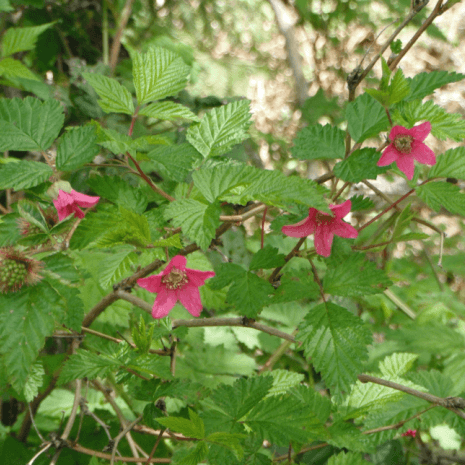
Salmonberry (Rubus spectabilis): Salmonberry is most commonly found in moist coastal forests, stream sides, bogs, and shorelines. The berries ripen anywhere from May to late July, depending on the climate, and range in color from orange to dark red. Salmonberries can be used in jams and jellies as well as a variety of deserts. This plant has been used to treat breathing issues, burns, cuts/scrapes, and skin troubles in the form of poultices and infusions.
Sugt’stun: Quimalat
Eyak: q’a’ts’
Purple Wildflower
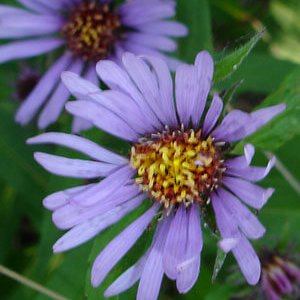
Purple wildflower (Siberian aster): Known by Alutiq peoples as a “purple daisy,” this plant has been used to treat cold/flu symptoms, coughs and chest congestion, measles, and pneumonia. It was either chewed or used to make infusions. Siberian aster is an herbaceous perennial found in open areas of subarctic boreal forests, alpine meadows, stream banks, and lake shores.
Dwarf Dogwood

Dwarf dogwood (Cornus canadensis): Also known as bunchberry, dwarf dogwood grows in woods, tundra, and low alpine habitats. The tiny flowers of dogwood sit in the center of four white bracts (modified leaves), that look like flower petals. These bracts help attract pollinators to the small flowers which burst open and launch pollen in the air in less than half a millisecond after insects land on the petals. Dwarf dogwood is an important food source for deer and moose in Alaska and also has been used by native peoples to treat cuts and scrapes. Additionally, mature leaves were steeped in hot water and used to cure colds.
Deer Fern
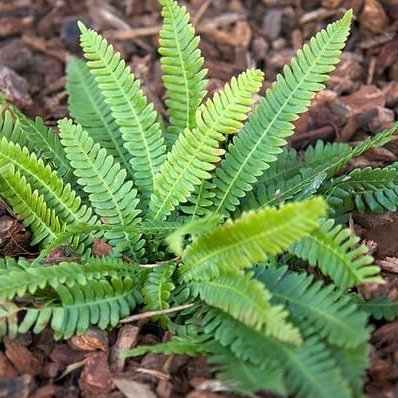
Deer fern (Blechnum spicant): Deer ferns can be found anywhere from sea level to montane zones where it dominates the understory of moist forests. This long lasting fern is an important food source for deer, elk, caribou, moose, and mountain goats, especially in colder months where food is limited. In the Cordova area, deer fern was used as a steambath switch by native peoples. It was said to be a medicine for the entire body, helping sores from breaking out.
Dwarf Dogwood

Sundew (Drosera rotundifolia): There are two different species of sundews that can be found in the muskeg meadows in Cordova: Drosera rotundifolia and Drosera anglica. Sundews are carnivorous plants that attract insects by producing a nectar from sticky glands. Once the insect lands on the plant and becomes stuck, it is smothered by the sundew’s tentacles and digested using enzymes produced from the glands. Because sundews are carnivorous and get important nutrients through digesting prey, they can grow well in poor soil conditions.
Five-leaved Bramble
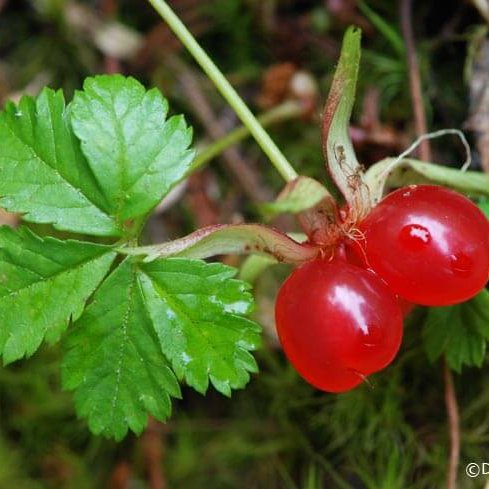
Five-leaved bramble (Rubus pedatus): Five-leaved bramble is a low-lying, creeping raspberry species. This plant bears five oval shaped, coarsely toothed leaflets with small white flowers that are bent backwards. The small red berries will appear in raspberry-like clusters. Five-leaved brambles grow in moist mossy forests, glades, meadows, and along streambanks. Although edible and tasty, the berries of this plant were not a common food source for Indigenous peoples due to their small size and softness.
- Adapted to local soil conditions and climate
- Provides shelter and food for wildlife
- Important to local pollinators and birds for their seeds and nectar
- Cordova has a range of edible and medicinal native plants.
- Prevents erosion and water runoff
- Improves soil health
When planning your native plant garden, consider the growing conditions of each species. What kind of soil do they thrive in? How moist should the soil be? How much sunlight do they need? For most successful growth, choose a growing space that mimics the species ideal environment in terms of soil texture, PH, organic matter content, and drainage requirements. You can create a garden that resembles a plant’s natural ecosystem by utilizing materials such as soil additives, mulches, rocks, and irrigation/water features. Although native plant gardens tend to be easier to care for, they will still require weeding and potentially watering, depending on weather conditions and rainfall.
Many native Alaskan plant seeds require 4-6 months of cold stratification. This is why it is best to sow wildflower seeds in a moist growth medium in the fall following the first frost. Avoid crowding the seeds while planting – wildflowers generally have large root systems that demand lots of space! Some species, such as Western Columbine, will likely take more than one growing season to fully germinate. It is advised to tend to and care for Native species vigorously in their first summer, growing them large and well-established, ensuring their survival in the first winter.
Look around! There are alien invaders encroaching on both sides of this native plant garden. Reed canarygrass can be found along the path leading towards the boardwalk as well as in Odiak pond itself. Hiding amongst the hospital’s rose bushes and beside the greenhouse you can find orange hawkweed and oxeye daisy. To learn more about these species and their impacts on the Copper River watershed visit our invasive species page here.
Orange Hawkweed
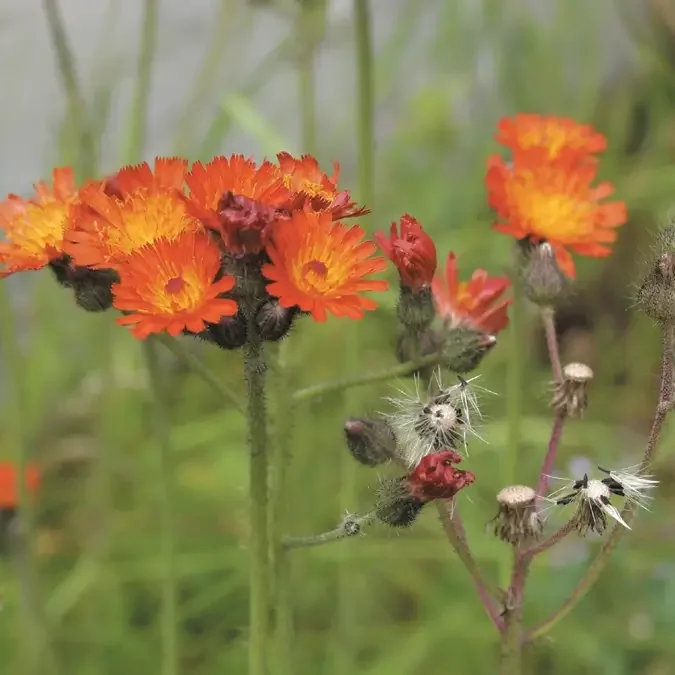
Orange hawkweed (Hieracium aurantiacum): Orange hawkweed is another highly invasive species in Alaska. It spreads via seed, rhizomes, and horizontal runners and will outcompete native plants and lower the biodiversity in infested areas. The flowers are bright orange and the stems have short, dark colored hairs on them.
Reed Canarygrass

Reed canarygrass (Phalaris arundinacea): Reed canarygrass is an extremely invasive species in Alaska. It forms dense, persistent monocultures in wetlands and disturbed areas (along roadsides). These dense stands promote silt deposition and constrict waterways which can alter salmon spawning grounds and send migrating fish off course. This grass grows 3-8 feet tall, has thick, hollow stems, and seed heads that are compact and range in color from light green to purple and then tan later in the season. When trying to identify reed canary grass, it will be much taller and appear more vibrant amongst native grasses.

